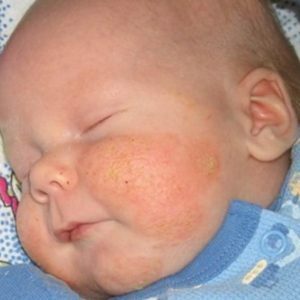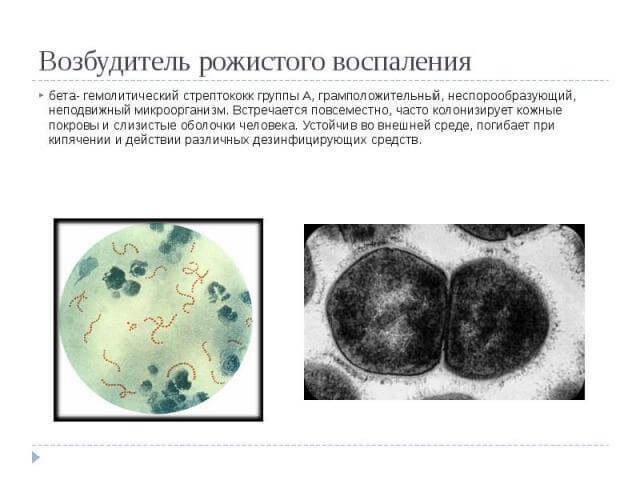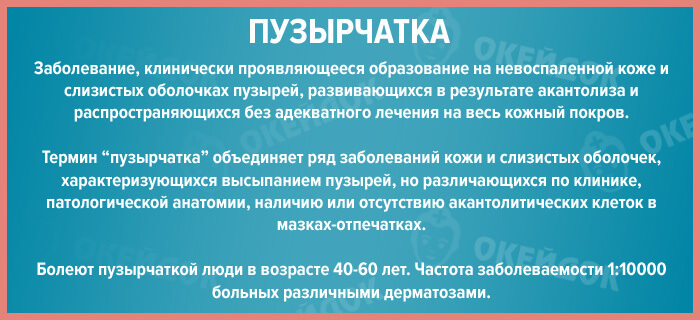Kaposi's sarcoma: photos of the initial stage, symptoms and treatment
Content
- What is Kaposi's Sarcoma (KS)?
- Causes of occurrence
- Provoking factors
- Symptoms of Kaposi's Sarcoma (photos of patients)
- Classification (types of sarcoma)
- Diagnostics
- Treatment of Kaposi's angiosarcoma
- Drug treatment
- Surgery
- Alternative home treatments
- Preventive measures
- Forecast for angiosarcoma
- Related Videos
What is Kaposi's Sarcoma (KS)?
Kaposi's sarcoma (Kaposi sarcoma, Kaposi's angiosarcoma, multiple hemorrhagic sarcomatosis or just SK) Is an oncodermatological disease characterized by multiple malignant neoplasms on the surface of the dermis and in the oral cavity.
Skin lesions are formed due to the proliferation of the inner lining of the lymphatic and blood vessels - the endothelium, they change their structure and become thinner.
Vascular cells become spindle-shaped, which confirms the diagnosis of Kaposi's sarcoma by histological marker.
It is possible to draw attention to what kind of Kaposi's disease sarcoma by the presence of cyanotic-reddish, bright red, dark red or brownish spots on the skin in patients (see. photo below), which then turn into formations
with a diameter of 5 mm.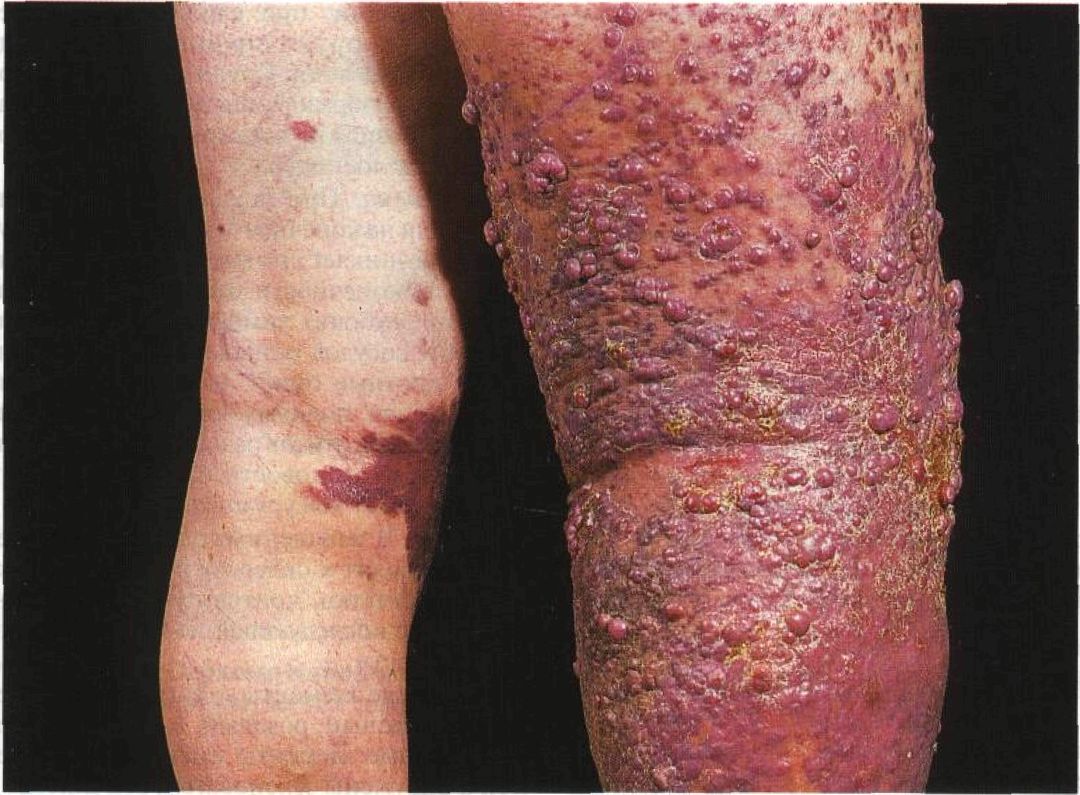
Diagnostics includes a blood test for HIV, a biopsy to take a sample for histology, and a study of the human immune system.
At the initial stage of education, painless, but with the progression of the process, pain appears.
Causes of occurrence
It is still impossible to single out a number of specific causes of Kaposi's sarcoma. But there are diseases and pathologies associated with the development of multiple hemorrhagic sarcomatosis:
- fungal mycosis;
- multiple myeloma;
- lymphosarcoma;
- Gardner's syndrome;
- neurofibromatosis;
- Werner's syndrome;
- Hodgkin's disease (lymphogranulomatosis).
People who have been exposed to radiation have a predisposition to the development of skin sarcoma, so the risk of pathology increases by 30-50 times.
Multiple hemorrhagic sarcoma can develop with mechanical tissue damage, rapid hormonal growth, the presence of foreign bodies or oncogenic viruses in the body.
Organ transplantation and, as a consequence, polychemotherapy and immunosuppressive therapy, while increasing the risk of Kaposi's sarcoma in men by 10-15%, much less often in women. According to statistics, in 75% of cases after the operation, the patient is diagnosed with idiopathic multiple hemorrhagic sarcoma.
Provoking factors
Angiosarcoma is often found in parallel with HIV infection in the patient's body.
Doctors agree that the provoking factor of Kaposi's sarcoma is a virus herpes type 8 (Human Herpes Virus 8 type), which is activated when immunity is lowered.
The virus is detected in a third of the patients studied, most of whom are bisexual and gay.
A predisposition to hemorrhagic sarcomatosis was revealed in older men, mainly from Mediterranean and Central Africa, gay, bisexual and transplant recipients bodies.
Symptoms of Kaposi's Sarcoma (photos of patients)
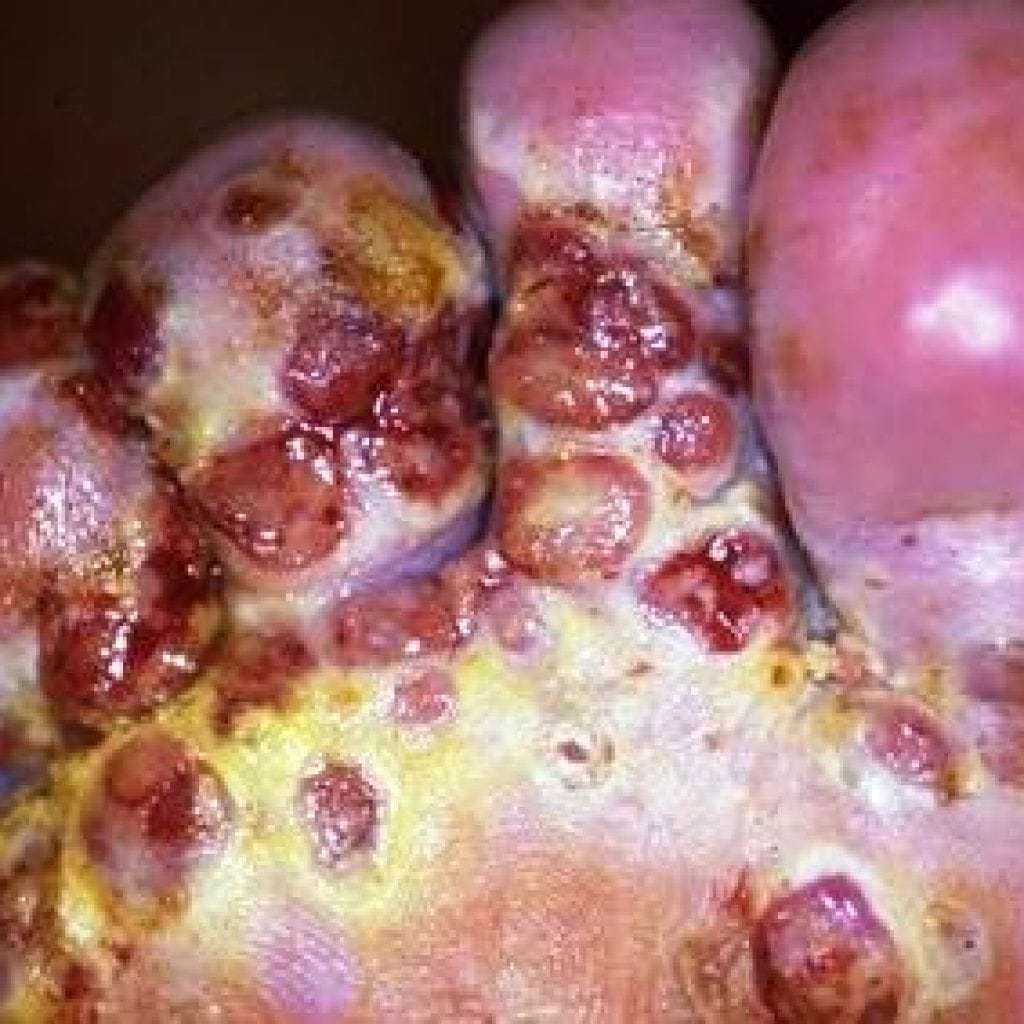

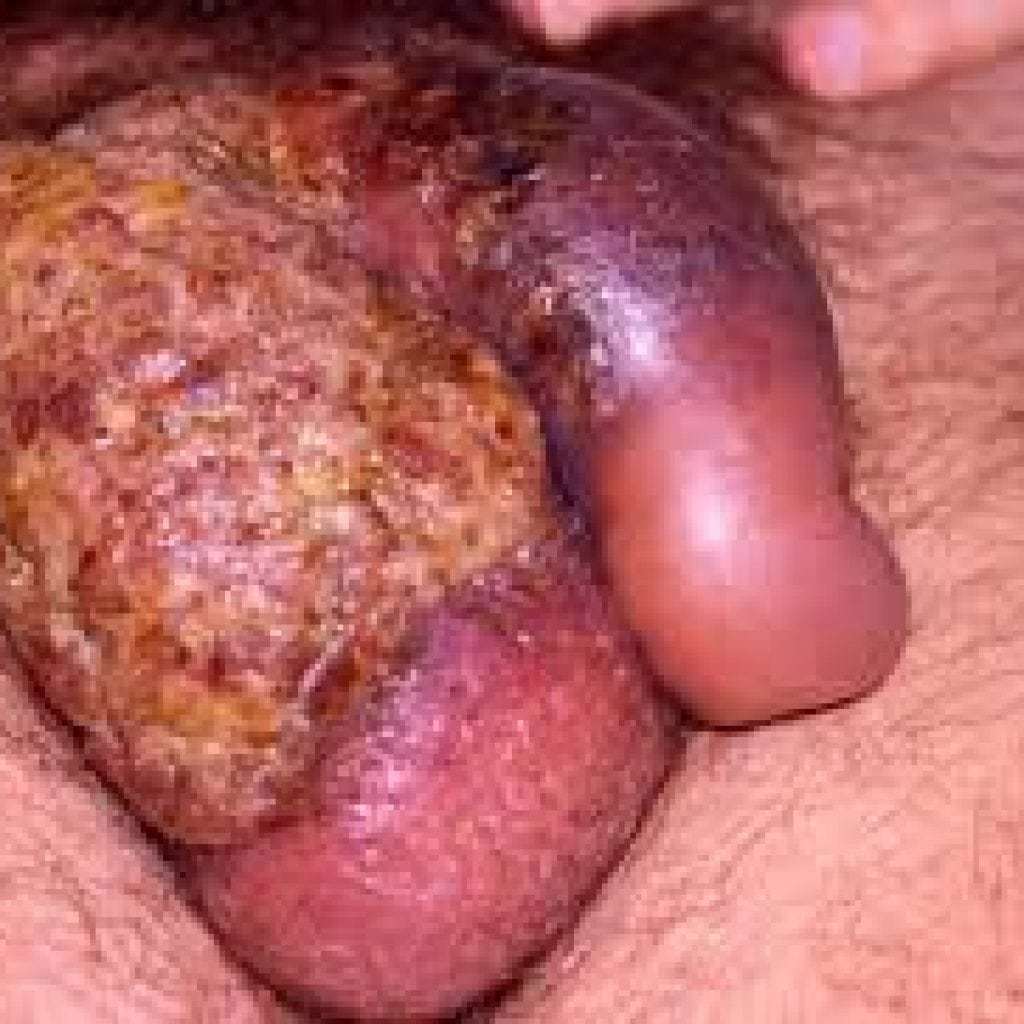
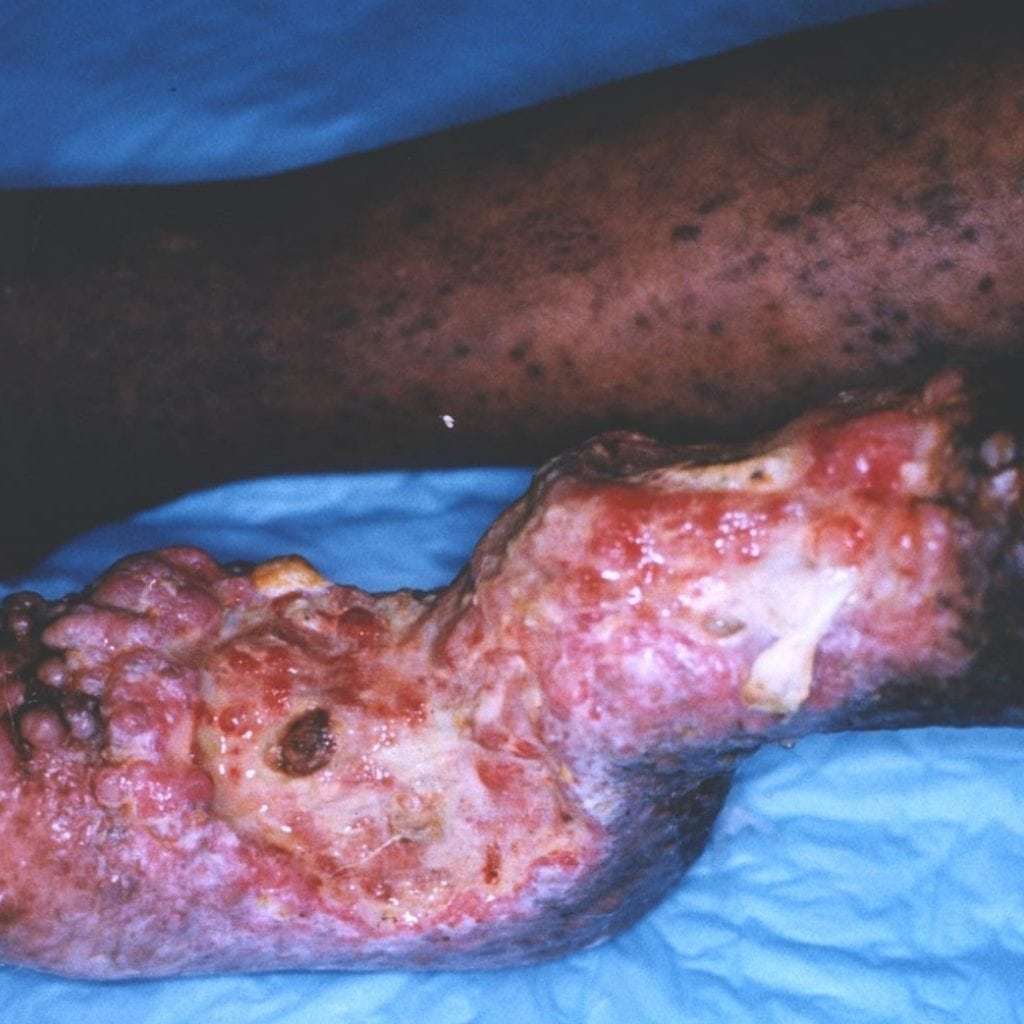
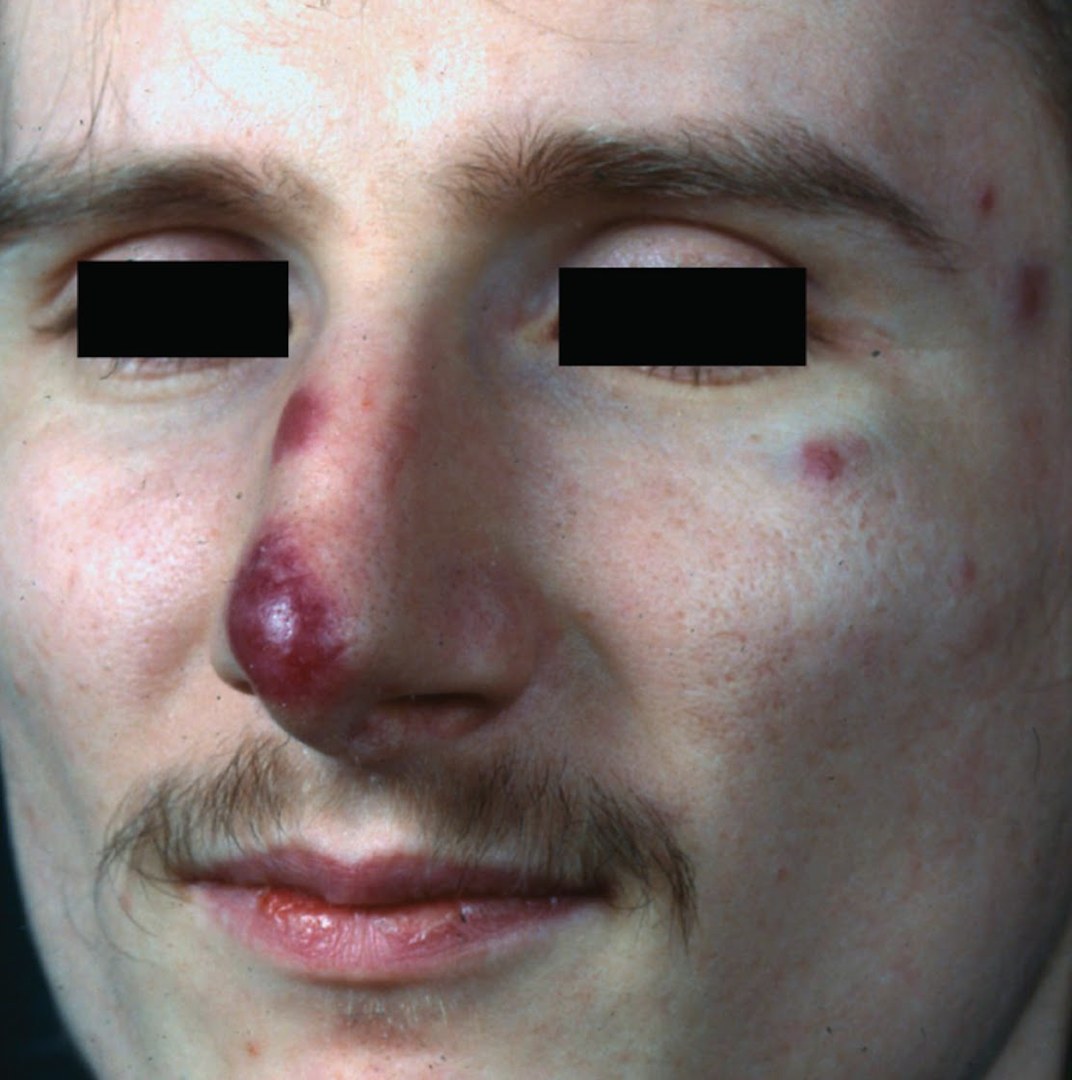
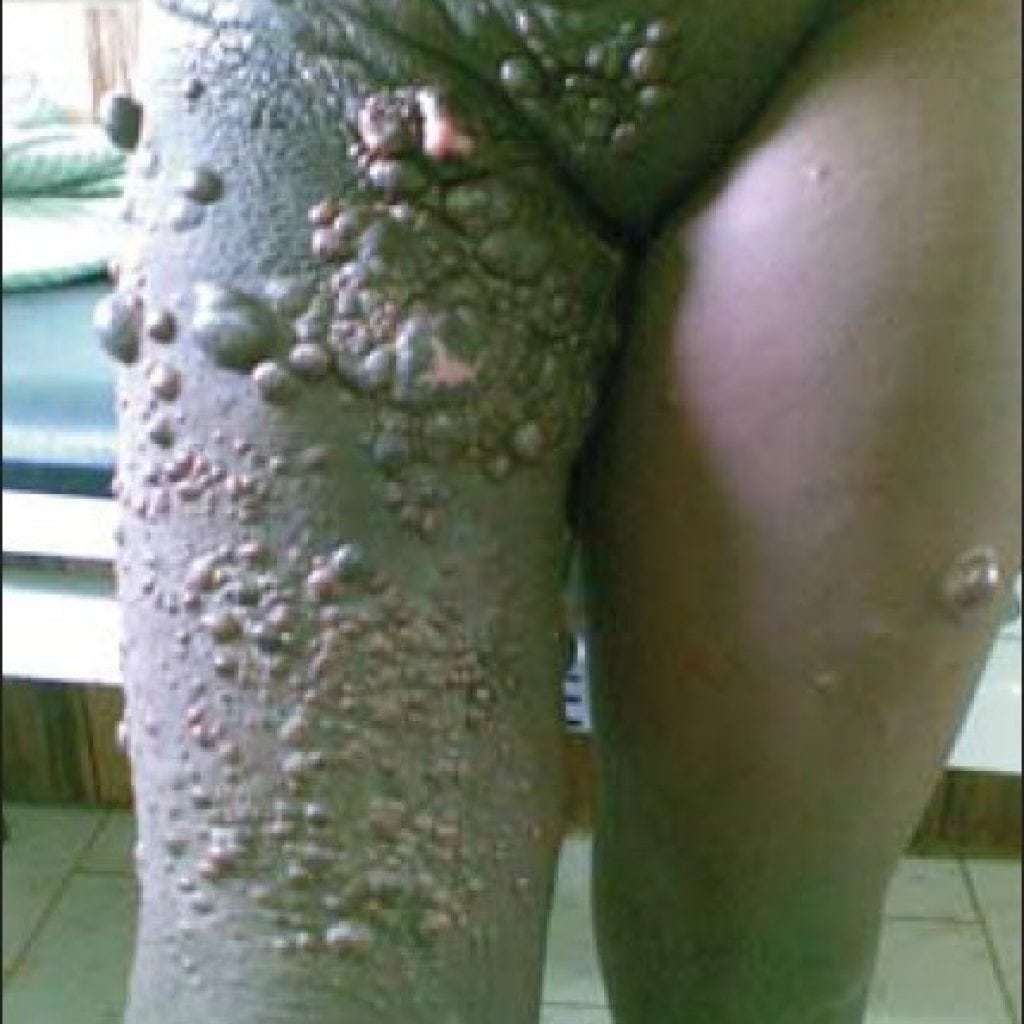
The main symptoms of Kaposi's Sarcoma:
- Skin lesions in the form of spots, plaques, vesicles, nodules up to 5 mm in size (see. photo above). The color of the tumors is bluish, dark, but can be reddish or purple, brown, does not change color when pressed. The plaques are shiny and smooth to the touch; in rare cases, they can flake off. Tumors can merge into one, acquiring a green tint. Skin sarcoma is manifested by deep blue-purple sores with necrotic plaque and an unpleasant odor secreted.
- Multiple tumors form edema of the surrounding tissues, sometimes there is a burning sensation, itching. The patient is worried about pain, heaviness in one or both limbs, elephantiasis may develop.
- Lesion of the mucous membranes, in which there is pain when chewing, diarrhea and bleeding in the stomach and intestines. The disease is accompanied by shortness of breath, cough, bloody sputum. Kaposi's sarcoma in the mouth is purple-red nodules that gradually increase in size.
- Inflammation of the lymph nodes singly or in groups.
- Damage to the liver, gastrointestinal tract and nervous system, bone tissue, which are easily confused with other pathologies. In this case, without spots and plaques on the skin of a purple color, Kaposi's sarcoma in a patient may not be immediately diagnosed.
Read also:Actinic keratosis
A slowly progressive disease develops into an intestinal and pulmonary form of pathology, which can be life threatening.
Classification (types of sarcoma)
Angioendothelioma of the skin is classified into four types:
1) Classic type. Ideopathic sarcoma affects older people, localized on the feet and in the form of spots or plaques of a bluish, brownish-brown hue.
The neoplasms are often covered with warts, the areas around them are pigmented (see. photo above).
Other areas of the skin are gradually affected, in the last turn the genitals and internal organs can be affected. There are 3 stages: 1. spotted 2. papular 3. tumor:
- Spotted. Kaposi's sarcoma is the initial stage, when the dermis is covered with cyanotic, purple, crimson spots. The diameter of the spots grows up to 5 cm, their surface is smooth. The progression of the disease is characterized by the fusion of multiple spots into a solid surface that itches and burns.
- Papular. With it, nodular formations are formed, round or semicircular, dense. Single papules can grow up to 10 mm, acquire a cyanotic or brown-purple color, and their surface resembles an orange peel. When several formations merge, a plaque of a dark brown hue or purple appears.
- Tumor. Nodules and tumors at this stage are formed in a single order or in groups. The formations are brown or bluish in color and reach 5 cm in length. When several formations combine into one, ulcers appear that bleed.
At each stage, tumor-like formations can provoke the appearance of purpura or subcutaneous hematomas.
2) Endemic angiosarcoma most common in Central Africa. According to statistics, children under one year old are most often affected by the disease, where mortality occurs after a couple of years.
3) Epidemic angiosarcoma, existing in parallel with AIDS, occurs in young people under 30.
Pathology is easy to recognize by spots on the tip of the nose or hard palate, as well as by bright blotches of pink on the body. Lymph nodes and internal organs are quickly affected, and the nodes become painful, bleeding.
4) Immunosuppressive sarcoma based on the treatment of patients with immunosuppressive therapy after organ transplantation or in the presence of cancer.
The type of the disease is characteristic of the middle-aged population, mainly men. The pathology is difficult to diagnose at an early stage, as there may be almost no visual symptoms.
Diagnostics
The first signs in the form of spots and plaques of bluish and brown color on the skin, the state of immunodeficiency and the presence of HIV infection in the patient almost always give an accurate diagnosis of Kaposi's sarcoma.
Read also:Scarlet fever in children: causes and symptoms, treatment and prevention of the disease
First, laboratory diagnostics are performed to determine the presence of the herpes simplex virus type 8. For this, the pathogen is isolated from the tissue affected by the tumor, and after the detection of the virus, antibodies are found to it.
Methods for detecting lesions of the mucous membranes:
- Bronchoscopy.
- Radiography of the lungs.
- Gastroscopy.
- Colonoscopy.
Diagnosis of a patient for the presence of Kaposi's sarcoma includes the following steps:
- examination of the mucous membranes that are visible;
- conducting an immunogram;
- a blood test for the presence of genital infections;
- Abdominal ultrasound and chest x-ray;
- esophagogastroduodenoscopy;
- CT of the kidneys and MRI of the adrenal glands.
Treatment angiosarcoma Kaposi

Treatment of Kaposi's sarcoma begins with therapy to increase immunity, after which a set of measures is already prescribed to eliminate the symptoms of the disease.
Such treatment as polychemotherapy is actively used for Kaposi's sarcoma, but the interaction of drugs for the treatment of HIV infection has a negative effect on the bone marrow.
The use of highly active antiretroviral therapy can completely suppress the vital activity of one of the herpes viruses, which is the causative agent of Kaposi's syndrome.
This chemotherapy lasts for a year and improves immunity.
Therapy with interferon preparations for raising immunity gives an effect if it is carried out for long courses. In addition, cryotherapy, topical chemotherapy and radiation are used.
Drug treatment
Currently, the disease of Kaposi's sarcoma is considered incurable in most cases, and medications can only temporarily remove the symptoms and temporarily improve the patient's condition.
The most popular drugs:
- Vincristine (applied once a week at 1.4 mg / kg intramuscularly);
- Vinblastine (the scheme of application first once a week, then a break, after which the weekly injection dose is 0.1 mg / kg);
- Doxorubicin (applied every three weeks at 60-70 mg / kg, but if necessary, the dose can be divided into three doses once a week);
- Prospidine (administered once a day intravenously or intramuscularly, the minimum dose may be 0.05 mg / kg, maximum 0.15 mg / kg);
- Bleomycin;
- Bendamustine;
- Cyclophosphamide.
At the initial stage of the disease, anticancer drugs are not immediately prescribed; before that, general strengthening agents are taken.
Interferons are used to enhance the effect of drugs in primary therapy.
If Kaposi's sarcoma is present together with HIV infection, therapy with 3-4 drugs is prescribed at once.
The strong side effects of anticancer drugs are offset by hormone therapy.
Surgery
It is possible to use surgery for Kaposi's sarcoma, with superficial lesions, if they are painless. But in case of illness, coagulation and electron irradiation are more appropriate.
When radiation therapy is inactive, surgical intervention is used, but when one tumor is removed, the affected cells may spread throughout the body with blood.
In such cases, excision of the focus of the disease is carried out in conjunction with chemotherapy or radiation, which gives a chance for long-term remission. at 30% patients.
Alternative home treatments

Alternative treatments for Kaposi's angiosarcoma include:
- Nutrition and food supplements.
- Herbal tinctures and balms.
The diet should be rich in vitamins to increase the resistance of the immune system, and easily digestible proteins should be consumed to create antibodies.
Fiber in food will help you empty your bowels and eliminate toxins.
Read also:Erysipelas of the leg: causes, symptoms and methods of treatment at home
In the fight against the disease, lingonberries and apricots with seeds can be added to the daily menu.
To block the formation of metastases, you should eat:
- garlic;
- sea fish such as sardine, trout, salmon;
- green and yellow vegetables.
Smoked meats, sour berries and citrus fruits, alcoholic beverages, foods containing a large amount of tannin, which provokes blood clots, should be excluded from the diet for angiosarcoma.
Recipes for herbal tinctures and balms:
- Aloe based tincture. To do this, you need to grind four leaves of aloe and fill them with 0.5 liters of vodka. After insisting for two weeks, take the medicine 1 tablespoon three times a day before meals.
- Tincture based on St. John's wort and grape vodka, which is infused for two weeks and taken three times a day, 30-40 drops.
- Plantain leaf balm. 100 grams of crushed plantain leaves should be mixed with 100 grams of granulated sugar, after which the balm will juice for two weeks. Drink liquid balm three times a day before meals.
Preventive measures
The first preventive measures for Kaposi's sarcoma are to identify people at risk.
Patients using immunosuppressive therapy should be one of the first to be screened for patients with herpes simplex virus type 8.
Further prevention is reduced to monitoring patients with the aim of the premature appearance of a relapse of the disease.
Preventive measures include:
- preventing sex without condoms;
- annual medical examinations of the dentist, surgeon, examination of the mucous membranes;
- exclusion of tobacco products from everyday life;
- a ban on the use of corticosteroids;
- strengthening the immune system;
- limiting exposure to the sun in the summer;
- prevention of HIV, AIDS.
The presence of an angiosarcoma in a relative is a reason to think about and undergo an examination for the presence of pathology, since there is a high probability of transmission of the disease by inheritance.
Forecast for angiosarcoma
It is possible to predict the life of a patient with angiosarcoma depending on the severity of the course of the disease. With a progressive process of the disease and lightning-spreading symptoms, the patient can live from two months to two years.
The subacute form of sarcoma can, in some cases, allow the patient to live for another three years. If the form of the disease is chronic and progresses slowly, then with appropriate therapy, the patient's life can be extended for 5-10 years.
An important factor is the state of the patient's immunity, so with deep immunodeficiency in combination with With AIDS, a lethal outcome can occur within a few months; there is no question of regression of the disease maybe.
When diagnosing Kaposi's sarcoma, a course of immunotherapy is first carried out, and then the main drugs for treatment are prescribed. The disease in combination with AIDS in most cases quickly ends in death, as the process progresses rapidly. When the first signs of pathology appear, it is important to annually monitor the presence of spots and nodules on the skin.

